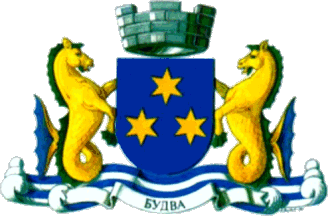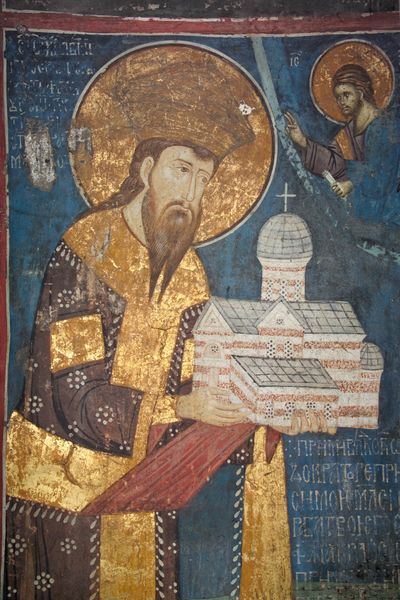|
Gradište Monastery
Gradište Monastery is in Buljarica, Montenegro, not far from Petrovac na moru. Like Reževići Monastery,Gradište was originally a medieval inn of the old Serbian Empire. It also was affiliated with Kosovo's Visoki Dečani Monastery. Founded in 1116, Gradište was mentioned in a document from the time of King Milutin in 1307. The monastery's three churches are St. Nicholas', built in 1610; the Assumption of the Holy Mother of God, whose frescoes date from 1620s; and Saint Sava Saint Sava ( sr, Свети Сава, Sveti Sava, ; Old Church Slavonic: ; gr, Άγιος Σάββας; 1169 or 1174 – 14 January 1236), known as the Enlightener, was a Serbian prince and Orthodox monk, the first Archbishop of the autocephalou ...'s, both the former built in 1855 and the latter built in the early 1500s. References Budva Municipality Serbian Orthodox monasteries in Montenegro 1116 establishments in Europe Christian monasteries established in the 12th century 17th-century Se ... [...More Info...] [...Related Items...] OR: [Wikipedia] [Google] [Baidu] |
Buljarica of the south Montenegrin coast. Buljarican fields and the slopes of Dubovica hill are well suited for the development of tourism, and could potentially hold a city of Budva's size. Buljarica cove stretches from ''Resovo brdo'' cove to ''Dubovica'', and has the largest beach of the otherwise limited beach areas of the Budva Riviera.
Buljarica ( sr-cyrl, Буљарица, ) is a village in the municipality of Budva, Montenegro. Its beach is about from Petrovac in the direction of Bar, the beach is long. Geography Buljarica has development potential to rival that of famed Velika Plaža Velika Plaža ( sq, Plazhi i Madh; sr-cyrl, Велика Плажа, ;, lit. "Big Beach") is a beach in Ulcinj Municipality, Montenegro. It stretches from Port Milena in Ulcinj to the Bojana River, which separates it from Ada Bojana. Demograph ...
|
Petrovac Na Moru
Petrovac ( cnr, Петровац, ) is a coastal town in Montenegro, within Budva Municipality. Petrovac is located on the coast between Budva and Bar, where the old mountain road from Podgorica reaches the coast. It has a 600 m long sandy beach and it is a popular tourist destination. Petrovac is seen as a somewhat "calmer" resort, in contrast to the lively and developed nearby towns of Budva and Sutomore. Population The 2011 census found the town's population to be 1,398. The ethnicity of residents was: :Montenegrins - 615 (43,99%) :Serbs - 545 (38,98%) :Croats - 12 (0,86%) :Others - 226 History The history of Petrovac began in Roman times, when a couple of villas were built at Krš Medinski: a 4th-century mosaic floor, remains of a villa and baths have been found behind St Ilija's church. Later, there was a Slav village. The village was first mentioned in the Chronicle of the Priest of Duklja. At the northern end of the bay is a 16th-century Venetian fortress, Kastel Lastva ... [...More Info...] [...Related Items...] OR: [Wikipedia] [Google] [Baidu] |
Reževići Monastery
The Reževići Monastery ( sr, Манастир Режевићи, Manastir Reževići) is a medieval Serbian Orthodox monastery located in Katun Reževići village between Budva and Petrovac in modern-day Montenegro. The monastery has two churches. According to a local legend, the 'Church of the Dormition of the Mother of God' was built in the 1220s by King Stefan Nemanjić (Stefan the First-Crowned), the first king of Serbia while the 'Church of the Archdeacon Stefan' was built by Emperor Stephen Uroš IV Dušan of Serbia in 1351. Etymology The name of the monastery is derived from the name of the clan Reževići, one of clans of the Paštrovići tribe. Legends According to local legends, there was a column in front of a guesthouse on the road between Budva and Petrovac in the Kingdom of Serbia in which a wine vessel full of wine was kept for thirsty passersby. One legend says that Raymond IV, Count of Toulouse drank from this vessel during the First Crusade. According t ... [...More Info...] [...Related Items...] OR: [Wikipedia] [Google] [Baidu] |
Kosovo
Kosovo ( sq, Kosova or ; sr-Cyrl, Косово ), officially the Republic of Kosovo ( sq, Republika e Kosovës, links=no; sr, Република Косово, Republika Kosovo, links=no), is a partially recognised state in Southeast Europe. It lies at the centre of the Balkans. Kosovo unilaterally declared its independence from Serbia on 17 February 2008, and has since gained diplomatic recognition as a sovereign state by 101 member states of the United Nations. It is bordered by Serbia to the north and east, North Macedonia to the southeast, Albania to the southwest, and Montenegro to the west. Most of central Kosovo is dominated by the vast plains and fields of Dukagjini and Kosovo field. The Accursed Mountains and Šar Mountains rise in the southwest and southeast, respectively. Its capital and largest city is Pristina. In classical antiquity, the central tribe which emerged in the territory of Kosovo were Dardani, who formed an independent polity known as th ... [...More Info...] [...Related Items...] OR: [Wikipedia] [Google] [Baidu] |
Visoki Dečani
The Visoki Dečani Monastery ( sr, Манастир Високи Дечани, Manastir Visoki Dečani, sq, Manastiri i Deçanit) is a medieval Serbian Orthodox Christian monastery located near Deçan, Kosovo. It was founded in the first half of the 14th century by Stefan Dečanski, King of Serbia. The Visoki Dečani monastery is located by the Deçan's Lumbardh river gorge at the foot of the Accursed Mountains, in the region of Metohija. It is located about from the town of Deçan. The monastery is managed by the Serbian Orthodox Eparchy of Raška and Prizren. The monastery has been under the legal protection of Serbia since 1947 with a designation of ''Cultural Monument of Exceptional Importance''. The monastery is part of the World Heritage site named " Medieval Monuments in Kosovo". History Construction began during the reign of Serbian King Stefan Dečanski in 1327 and the original founding charter from 1330 has been preserved. Dečanski's son, Stefan Dušan, seized the ... [...More Info...] [...Related Items...] OR: [Wikipedia] [Google] [Baidu] |
Milutin
Milutin ( sr, Милутин) is a Serbian masculine given name of Slavic origin. The name may refer to: *Stephen Uroš II Milutin of Serbia (1253–1321), king of Serbia *Milutin Bojić (1892–1917), poet *Milutin Ivković (1906–1943), footballer *Milutin Milanković (1879–1958), Serbian scientist *Milutin Mrkonjić (born 1942), politician *Milutin Šoškić (born 1937), former Serbian goalkeeper See also *Milutinović *Milutinovac Milutinovac is a village in the municipality of Kladovo, Serbia Serbia (, ; Serbian: , , ), officially the Republic of Serbia ( Serbian: , , ), is a landlocked country in Southeastern and Central Europe, situated at the crossroads of the ... {{given name Slavic masculine given names Serbian masculine given names ... [...More Info...] [...Related Items...] OR: [Wikipedia] [Google] [Baidu] |
Saint Sava
Saint Sava ( sr, Свети Сава, Sveti Sava, ; Old Church Slavonic: ; gr, Άγιος Σάββας; 1169 or 1174 – 14 January 1236), known as the Enlightener, was a Serbian prince and Orthodox monk, the first Archbishop of the autocephalous Serbian Church, the founder of Serbian law, and a diplomat. Sava, born as Rastko Nemanjić ( sr-cyr, Растко Немањић), was the youngest son of Serbian Grand Prince Stefan Nemanja (founder of the Nemanjić dynasty), and ruled the appanage of Zachlumia briefly in 1190–92. He then left for Mount Athos, where he became a monk with the name ''Sava'' (''Sabbas''). At Athos he established the monastery of Hilandar, which became one of the most important cultural and religious centres of the Serbian people. In 1219 the Patriarchate exiled in Nicea recognized him as the first Serbian Archbishop, and in the same year he authored the oldest known constitution of Serbia, the ''Zakonopravilo'' nomocanon, thus securing full religious ... [...More Info...] [...Related Items...] OR: [Wikipedia] [Google] [Baidu] |
ProQuest
ProQuest LLC is an Ann Arbor, Michigan-based global information-content and technology company, founded in 1938 as University Microfilms by Eugene B. Power. ProQuest is known for its applications and information services for libraries, providing access to dissertations, theses, ebooks, newspapers, periodicals, historical collections, governmental archives, cultural archives,"Jisc and ProQuest Enable Access to Essential Digital Content" retrieved May 21, 2014 and other aggregated databases. This content was estimated to be around 125 billion digital pages, ... [...More Info...] [...Related Items...] OR: [Wikipedia] [Google] [Baidu] |
Budva Municipality
Budva Municipality is one of the municipalities of Montenegro. The administrative center is Town of Budva. The municipality is located at the Adriatic coast in southwestern Montenegro. Location and tourism Budva municipality is located on the Budva Riviera region, long strip of the Adriatic coast surrounding the town of Budva in southwestern Montenegro. It is part of the Montenegrin Littoral geographical region. It is located roughly along the middle of the Montenegrin coast, and is a center for Montenegrin beach tourism. There are of beaches which lie along the Budva Riviera. Tourism is the main driver of the economy of Budva. It is a significant tourist destination on the eastern Adriatic, and by far the most popular destination in Montenegro. During the 2013, Budva recorded 668,931 tourist visits, and 4,468,913 overnight stays, thus accounting for 44,8% of tourist visits to Montenegro, and 47,5% of its overnight stays. The best known and most popular settlements along the Budv ... [...More Info...] [...Related Items...] OR: [Wikipedia] [Google] [Baidu] |
Serbian Orthodox Monasteries In Montenegro
This is a list of Serbian Orthodox Christian monasteries in Serbia and near areas (Montenegro, Bosnia and Herzegovina, Croatia, North Macedonia, and Kosovo), also Romania, Hungary, Greece, Germany, United States of America, Canada, and Australia. Stauropegions There are two stauropegion monasteries in the Serbian Orthodox Church, that are directly subordinated to the Serbian patriarch: Archeparchy of Belgrade and Karlovci Source Eparchy of Srem Source Eparchy of Banat Source Eparchy of Bačka Eparchy of Šabac Source Eparchy of Valjevo Source Eparchy of Šumadija Source Eparchy of Vranje Source Eparchy of Timok Source Eparchy of Kruševac Source Eparchy of Žiča Source Eparchy of Niš Source: https://eparhijaniska.rs/manastiri Eparchy of Braničevo Eparchy of Mileševa Source In Serbia In Montenegro Eparchy of Raška and Prizren, Eparchy of Ras and Prizren Source In Central Serbia In Kosovo Metropolit ... [...More Info...] [...Related Items...] OR: [Wikipedia] [Google] [Baidu] |
1116 Establishments In Europe
Year 1116 ( MCXVI) was a leap year starting on Saturday (link will display the full calendar) of the Julian calendar. Events By place Byzantine Empire * Autumn – Battle of Philomelion: Emperor Alexios I (Komnenos) leads an expedition into Anatolia and meets the Seljuk army under Sultan Malik Shah (near Philomelium). The Byzantines introduce a new battle formation of Alexios' devising, the ''parataxis'' (a defensive formation, consisting of a hollow square, with the baggage in the centre). During the battle, the Seljuk Turks mount several attacks on the formations, but all are repulsed. The Byzantine cavalry makes two counterattacks; the first is unsuccessful. But a second attack, led by Nikephoros Bryennios (the Younger), breaks the Seljuk forces, who then turn to flight. The following day Malik Shah again attacks, his army completely surrounding the Byzantines from all sides. The Seljuk Turks are once more repulsed, with many losses. Alexios claims the vict ... [...More Info...] [...Related Items...] OR: [Wikipedia] [Google] [Baidu] |






_mini.jpg)